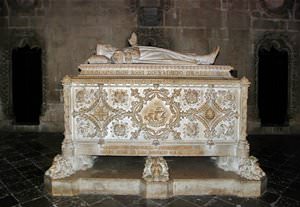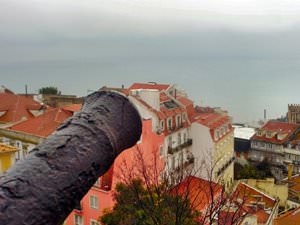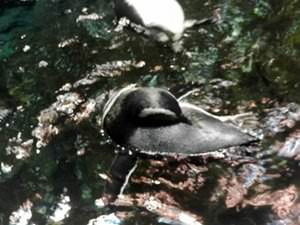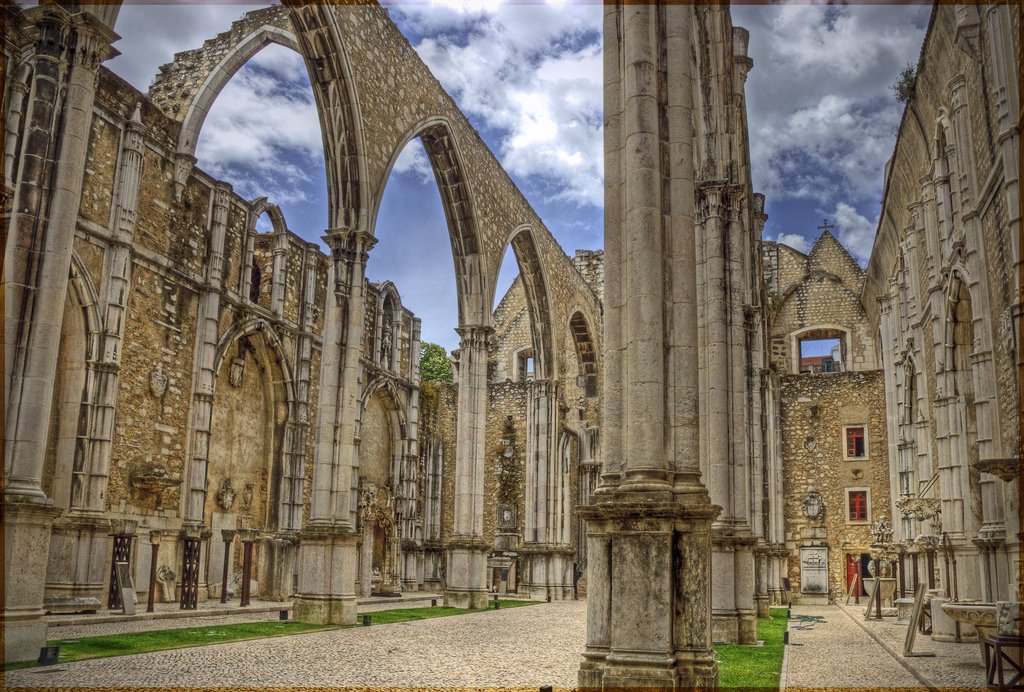Top architectural sightseeing and landmarks of Lisbon - ideas on city exploration routes
Video of flights over top monuments of Lisbon in HD format.
Use 'Full Screen' mode.
Jeronimos Monastery, Lisbon
Location on the map:  Facts:
Facts:
» Jeronimos is the monastery founded by Henry the Navigator in 1450. The building of the monastery is a grandiose monument to late-Manueline style of Portuguese architecture. » The Jeronimos is protected by UNESCO as a World Heritage Site of mankind.
» The monastery is inextricably associated with the Age of Discovery. Vasco da Gama and his companions spent there the night in prayer before sailing towards India.
» King Manuel I and Joao III are buried in the monastery, as well as Vasco da Gama, Camoes and Fernando Pessoa.
» Since 1903 the western wing of the monastery has being housing the National Archaeological Museum.
Castle of Sao Jorge, Lisbon
Location on the map:  Facts:
Facts:
» The Castle of Sao Jorge is the fortress located on a high hill; it’s visible from almost anywhere in the city. » The castle has long served as a royal residence until the 16th century, when the Ribeira Palace was built.
» The Castle of Sao Jorge at different times was used as a theater, a prison and an arsenal. The earthquake of 1755 turned the castle in ruins.
» In 1938, active reconstruction of the castle began, in which the medieval wall restored, and the park with monuments to the Great King Afonso I and Manuel I was laid out.
» Today the castle is open for visitors who could climb the tower and enjoy breathtaking view of the city. The castle has interesting multimedia exhibition about the history of Lisbon.
Santo Antonio Church, Lisbon
Location on the map:  Facts:
Facts:
» The Vasco da Gama Tower is the skyscraper of 140 meters, which is attached to the eponymous 72-meter high hotel. » The tower was named after the Portuguese navigator, so the steel structure of the building resembles the sail of a caravel.
» The tower was built in 1998 for the Universal Exhibition Expo ‘98.
» There is an observation deck in the tower at an altitude of 120 meters, and just below there is the panoramic restaurant offering breathtaking views of Lisbon and the Tagus River.
» The luxurious 20-storey hotel with 178 rooms was added to the tower in 2007.
Lisbon Oceanarium, Lisbon
Location on the map:  Facts:
Facts:
» The Lisbon Oceanarium is located in the Park of Nations, which was also the fairground for the World Expo 1998. » The Lisbon Oceanarium has a huge collection of marine species, including birds, mammals, fish, goad and other marine organisms. In total there are 16,000 birds of 450 species in the Oceanarium.
» The central aquarium is 7 meters deep; its volume of 5,000 m3 creates illusion of the open ocean.
» About one hundred species from around the world live in this aquarium, including sharks, rays, chimaeras, as well as various species of tuna, barracudas, groupers and moray eels. One of the main features is the large moon-fish, for which the unique environment was created.
» Other interesting species include two large spider crabs and two sea otters named Eusebio and Amalia.
Santa Justa Lift, Lisbon
Location on the map:  Facts:
Facts:
» Santa Justa Lift is the elevator platform that was built to help pedestrians to overcome the steep slope, tying the Rua do Ouro (below) with an area of Largo do Carmo (above). » In 2002, the object has been recognized as a monument of national importance.
» The Lift is built in Gothic Revival style. The height of the building is 45 meters.
» The elevator consists of two lifts; cabins are decorated with wood and mirrored panels. The capacity of each of the elevators is 19 seats and 10 standing places.
» The Lift is used by locals in everyday activity. Tourists are attracted by panoramic views from the upper platform. However, the transport service isn’t free.
Triumphal Arch, Lisbon
Facts: » Construction of the Triumphal Arch began immediately after a major earthquake in 1755 as a symbol of restoration of Lisbon.
» Although arch construction started in 1755, it ended only in 1873.
» French architecture has inspired Portuguese for construction of arches.
» The arch had a clock and allegorical figures of Fame, Ingenuity and Courage, as well as statues of famous people: Viriatus, Nuno Alvares Pereira, Vasco da Gama and the Marquis of Pombal.
» Several sculptors were engaged in the artwork of arches.
Monastery of Carmelites, Lisbon
Facts: » The Carmelite Monastery is the medieval Gothic monastery, which was built in 1389-1423 by the Portuguese knight Nuno Alvares Pereira for the Carmelite Order.
» Long ago, the Carmelite Monastery has been the main church of Lisbon; with its dimensions it was second only to the Lisbon cathedral.
» During an earthquake and fire in 1755, the monastery was almost destroyed; only heavy altar pieces have preserved. Reconstruction of the monastery has begun, but in 1834 the work was interrupted.
» As a result, it was decided not to rebuild the ruined church in the future, but just to leave it under the open sky. The arches of the buildings were mostly destroyed; pointed arches support parts of the surviving walls.
» Residential part of the monastery in 1836 was signed off to army, and the remains of the church were moved to the archaeological museum.
This guide to architectural sightseeing in Lisbon is protected by the copyright law. You can re-publish this content with mandatory attribution: direct and active hyperlink to www.orangesmile.com.
City tours, excursions and tickets in Lisbon and surroundings
Build your walking routes in Lisbon on the landmark map
Hilton builds third luxury hotel in Kyoto
Hilton has announced that it will soon begin a project to build a new hotel in Kyoto. It will be located in the heart of the city, in the prestigious area of Sanjo-Kawaramachi. Guests will be able to easily reach all areas of interest in the dynamic city, many popular attractions and recreation areas will be within a walking distance from the hotel. Read this
Read this
27.07.2024
Hilton has announced that it will soon begin a project to build a new hotel in Kyoto. It will be located in the heart of the city, in the prestigious area of Sanjo-Kawaramachi. Guests will be able to easily reach all areas of interest in the dynamic city, many popular attractions and recreation areas will be within a walking distance from the hotel.
27.07.2024


 English
English Russian
Russian Dutch
Dutch German
German Spanish
Spanish French
French Türkçe
Türkçe




















